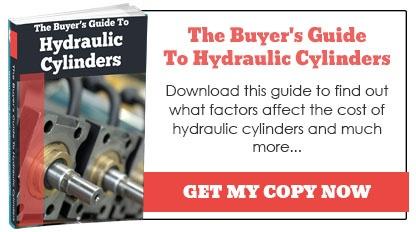
Hydraulic cylinder testing has been undertaken by maintenance technicians in many different environments to ensure that they are operating at their required level of efficiency. It is possible for things to go wrong with your hydraulic cylinders, and having suitable hydraulic cylinder testing procedures in place will ensure that you can quickly identify problems.
Special Training
Some manufacturers even run special training for their providers and service staff so that the appropriate hydraulic cylinder testing procedure is implemented. It is best not to do testing on a cylinder unless you have a very good understanding of the cylinder, its specifications and how it functions.
You may have technical staff who sometimes do this work, but it is important to ensure that they genuinely know how to test a hydraulic cylinder and are not putting themselves or the cylinder at risk during the process.
Step 1: Return Line Testing
A simple way of testing piston seals is to push the piston in and out a few times and then stop at the end and apply pressure to the hydraulic cylinder. If you disconnect the return line of the cylinder, push the piston all the way to the other end with the fluid under pressure in front of it, then if you have fluid flowing out from where the return line had been disconnected, you know that there is a leak around your piston.
Step 2: Mid-Stroke Testing
This does not cover problems that occur if the leak only happens when the piston is in mid-stroke. Another method is to do a test when the piston is halfway in the cylinder. Controlling the movement of the cylinder can be difficult when it is placed under pressure, so you need to have a way of mechanically holding the cylinder and the piston in place. It is important to remember that even a small cylinder can deliver up to 10 tonnes of force, so making sure the cylinder and the piston are secure is critical.
Step 3: Hydrostatic Testing
Hydrostatic testing is where the piston is held hydraulically at a point in the stroke. With this test, the pressure to hold the piston may impact on the other end of the cylinder, placing a much greater strain which could lead to failure. This can be prevented by ensuring there is a pressure relief valve set at an appropriate value for the cylinder. This process will test the integrity of the cylinder and help you identify where there are problems. You may need to only undertake a minor repair or replace some components for the cylinder to be fully functional again.
Doing it right
As you can see, even for relatively simple hydraulic cylinder testing there is a range of practical considerations that need to be managed. It is worth taking advantage of the services of a professional business with knowledge of the best hydraulic cylinder testing procedure.
Water Contamination
You may want to test if your hydraulic fluid is contaminated with water. This may occur when hot, damp air is drawn into the system; and when it cools the moisture condenses. When you take the fluid, put it on a spoon and then heat it over a flame; you will see bubbles forming if there is water in the fluid.
The benefits of testing
By ensuring you do suitable hydraulic cylinder testing and properly maintain your equipment you should increase the life of your cylinders. Quality components are built to withstand pressure and restrict fluid contamination, but there are problems that can occur in a range of operational environments that can only be identified by following a through hydraulic cylinder testing procedure.
For more information about sourcing the best hydraulic cylinders for your application, please download our free Ultimate Guide to Hydraulic Cylinders by clicking here.






